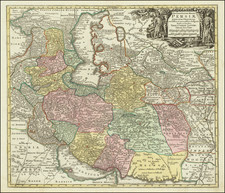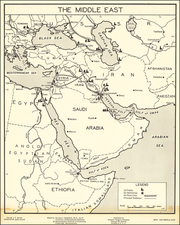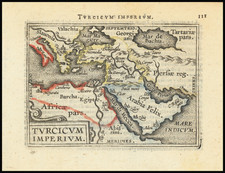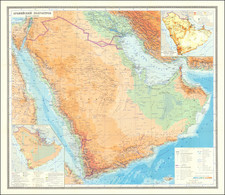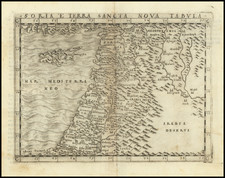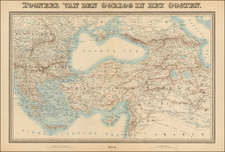Fantastic map of central Iraq showing the course of the Tigris and Euphrates and including a number of mythical and biblical details, with a particular focus on Roman campaigns in Babylonia. The map was made from Guillaume de L'Isle's posthumous cartographic collection (presumably an archive of manuscript maps and unfinished copper plates) by one of his 10 brothers, the accomplished mapmaker Joseph-Nicolas de L'Isle. The map was published by Jean Lattré in Paris in 1766.
The map was published in 1766 alongside another map, issued at the same time, which focused on the "Retreat of the Ten Thousand," a Greek force that was stranded in Persia and fought their way back home. Both of these maps were advertised to the general public as being useful sources that contextualized two of the great "behind enemy lines" operations of classical antiquity in the near east.
The advertisement for this map describes the purpose of the map as follows:
We start by the Roman expedition in this country, under the orders of Julian the Apostate. We will only follow the march of this emperor, from the moment where he entered the region shown in this map; without looking at the previous parts of Julian's expeditions, which have been described by much more talented pens than ours.
This highly decorative, informative, and detailed map names a number of cities, towns, and features. Baghdad is, of course, shown, and it is described as built in the year 762 by the Calif al-Mansour. Routes of apostles, the Tower of Babylon, great walls, deserts in the city, and much more are among the fascinating features shown. Canals criss-cross the desert, connecting the two great rivers, and the name of the region is given as both the classical Babylonia and the modern "Hierac," which would later become Iraq.
The map focuses in part on the route of Julian the Apostate, the last non-Christian emperor of Rome. In the fourth century, Julian attempted to capture territory from the Sasanian Empire that then ruled Mesopotamia in order to garnish support from the Roman Empire's Eastern Army. He advanced through Persia, where he met his death in a long and fruitless campaign that symbolized the latter years of the Empire.
The map includes a fantastic title cartouche showing the ruins of Babylonia as well as a long dedicatory text. In all, a great, highly decorative, and very, very interesting map that shows the 18th-century fascination with classical history.









